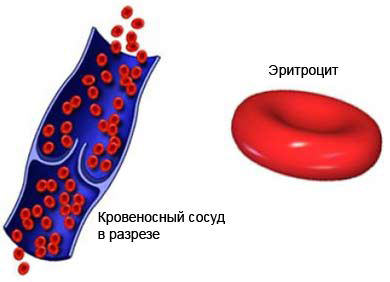Anemia zhelezodefitsitnaya
Description of iron deficiency anemia
The disease results from the reduction of iron in the blood. This occurs when there is insufficient supply of iron to the body. The body uses iron to manufacture Hemoglobin, a component of red blood cells, which carry oxygen to the tissues and muscles. Heavy bleeding can also cause anemia.

Causes of iron deficiency anemia
Factors, which play a role in causing the disease:
- Poor absorption of iron in the gastrointestinal tract (can occur due to intestinal diseases or operations);
- Chronic bleeding (eg, heavy menstrual bleeding, hemorrhage in the gastrointestinal tract);
- Lack of iron in the diet (common cause in infants, children, and pregnant women).
Risk factors
Factors, that increase the risk of developing iron deficiency anaemia:
- Periods of rapid growth (childhood, YouTube);
- Heavy menstrual bleeding or chronic blood loss from the gastrointestinal tract;
- Pregnancy;
- Diet, that do not contain enough iron;
- Anemia can develop in infants, which have not yet begun to eat solid food after six months;
- Children, consuming only milk aged 12 months;
- Alcoholism.
Symptoms of iron deficiency anemia
While most people with mild anemia have no symptoms, when present, symptoms may include:
- Fatigue;
- Pale skin;
- Nail changes;
- Weakness;
- Headache;
- Reducing health;
- Cardiopalmus;
- Infection;
- Link has substance, which are not suitable for food, such as ice or clay;
- Hair loss;
- Shortness of breath during or after physical exertion.
Diagnosis of iron deficiency anemia
The doctor asks about the symptoms and medical history, and performs a physical exam.
Tests may include:
- Analysis of the concentration of iron;
- Checking the iron binding capacity of transferrin;
- Analysis of the level of ferritin;
- The study of blood smear under the microscope;
- Fecal tests – search for blood in the stool.
Treatment of iron deficiency anemia
Treatment may include:
Supplementation, increasing iron content
Iron can be taken as a supplement or as part of a multivitamin. Iron enters the body in many forms. Ferrous sulfate is the cheapest and most commonly used iron supplementation. Some drugs contain vitamin C, to improve the absorption of iron. If iron supplementation is necessary to consult with your doctor, because the iron level may become too high.
Iron-rich cereals
Your doctor may recommend to feed your baby cereal porridges, where a lot of iron.
Prevention of iron deficiency anemia
To reduce the risk of, you need to take the following steps:
- There are products, rich in iron (eg, oysters, meat, poultry, fish);
- Avoid products, which impede the absorption of iron, such as black tea;
- Ask the doctor, whether the child gets enough iron:
- Beginning four months, breastfeeding needs receiving iron supplements, until the child begins to get enough iron from other sources, such as cereal grains for feeding infants or iron-fortified foods;
- If bottle-fed children should receive a mixture of, that, fortified with iron;
- Many premature babies need additional iron supplementation, since one month from birth.
